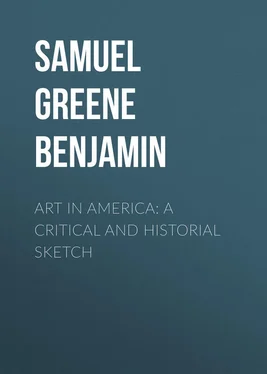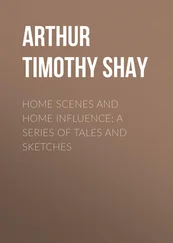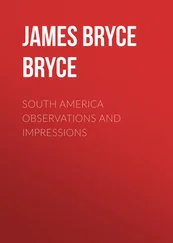Samuel Benjamin - Art in America - A Critical and Historial Sketch
Здесь есть возможность читать онлайн «Samuel Benjamin - Art in America - A Critical and Historial Sketch» — ознакомительный отрывок электронной книги совершенно бесплатно, а после прочтения отрывка купить полную версию. В некоторых случаях можно слушать аудио, скачать через торрент в формате fb2 и присутствует краткое содержание. Жанр: foreign_antique, foreign_prose, на английском языке. Описание произведения, (предисловие) а так же отзывы посетителей доступны на портале библиотеки ЛибКат.
- Название:Art in America: A Critical and Historial Sketch
- Автор:
- Жанр:
- Год:неизвестен
- ISBN:нет данных
- Рейтинг книги:4 / 5. Голосов: 1
-
Избранное:Добавить в избранное
- Отзывы:
-
Ваша оценка:
- 80
- 1
- 2
- 3
- 4
- 5
Art in America: A Critical and Historial Sketch: краткое содержание, описание и аннотация
Предлагаем к чтению аннотацию, описание, краткое содержание или предисловие (зависит от того, что написал сам автор книги «Art in America: A Critical and Historial Sketch»). Если вы не нашли необходимую информацию о книге — напишите в комментариях, мы постараемся отыскать её.
Art in America: A Critical and Historial Sketch — читать онлайн ознакомительный отрывок
Ниже представлен текст книги, разбитый по страницам. Система сохранения места последней прочитанной страницы, позволяет с удобством читать онлайн бесплатно книгу «Art in America: A Critical and Historial Sketch», без необходимости каждый раз заново искать на чём Вы остановились. Поставьте закладку, и сможете в любой момент перейти на страницу, на которой закончили чтение.
Интервал:
Закладка:
It is said that Copley was a very slow and laborious worker. The elaboration he gave to the details of costume doubtless required time. But if the popular opinion was correct, we must assume that many of the paintings now reputed to be by his hand are spurious. It is a common saying that a Copley in a New England family is almost equivalent to a title of nobility; and this very fact would lead many to attribute to him family portraits by forgotten artists, who had, perhaps, caught the trick of his style. But there yet remain enough well authenticated portraits by this great painter, in excellent preservation, to render the study of his works one of great interest to the art student. There is no mistaking the handling of Copley. Self-taught, his merits and defects are entirely his own. His style was open to the charge of excessive dryness; the outlines are sometimes hard, and the figures stiff almost to ungracefulness. The last fault was, however, less noticeable in the formal, stately characters and costumes of the time than it would be under different conditions. In Copley's best compositions these errors are scarcely perceptible. He was far superior to West as a colorist, and was especially felicitous in catching the expression of the eye, and reproducing the elegant dress of the period; while we have had no artist who has excelled him in perceiving and interpreting the individuality and character of the hand. A very fine example of his skill in this respect is seen in the admirable portrait of Mrs. Relief Gill, taken when she was eighty years old. Gilbert Stuart remarked of the hand in the portrait of Colonel Epes Sargent, "Prick that hand, and blood will spurt out." It is indeed a masterpiece. No painter was ever more in sympathy with his age than Copley; and thus, when we look at the admirable portraits in which his genius commemorated the commanding characters of those colonial days, in their brilliant and massive uniforms, their brocades and embroidered velvets, and choice laces and scarfs, the imagination is carried back to the past with irresistible force, while, at the same time, we are astonished at the ability which, with so little training, could give immortality both to his contemporaries and his own pencil.
While the fame of Copley will ultimately rest on the masterly portraits which he bequeathed to posterity, yet it will not be forgotten that he was one of the ablest historical painters of his time. The compositions entitled the "Boy and the Squirrel," painted in Boston, the "Death of Major Pierson," and the "Death of Chatham," will contribute for ages to the fame of one of the most important American artists of the last century.
Charles Wilson Peale, the next artist of reputation in the colonies, owes his celebrity partly to accidental circumstances. Of course a certain degree of ability is implied in order that one may know how to turn the winds of fortune to the best account when they veer in his favor. But in some cases, as with Copley and West, man seems to wrest fate to his advantage; while in others she appears actually to throw herself in his way, and offer him opportunities denied to others. At any rate it seems no injustice to ascribe the continued fame of Charles Wilson Peale to the fact that he was enabled to associate his art with the name of Washington: and that his son, Rembrandt, by also following art pursuits, was able to emphasize the fame of the family name. Peale the elder was not a specialist; he was rather, like so many born in America, gifted with a general versatility that enabled him to succeed moderately well in whatever he undertook, without achieving the highest excellence in any department. Inclining alternately to science and mechanics, he finally drifted into art, went over to England and studied with West, and returned to America in time to enter the army and rise to the rank of colonel. His versatile turn of mind is well illustrated by one who says that "he sawed his own ivory for his miniatures, moulded the glasses, and made the shagreen cases."
It was the good fortune of Peale to paint several excellent portraits of Washington, representing him during the military part of his career, both before and during the Revolution. Lacking many of the qualities of good art, these portraits are yet faithful and characteristic likenesses of the Father of his Country, and as such are of great interest and value.
It is to another Revolutionary soldier of superior natural ability, Colonel John Trumbull, that the country is indebted for a proof of the national turn for the fine arts. The son of Jonathan Trumbull, Colonial Governor of Connecticut, he received a classical education at Harvard University. But here, again, observe the far-reaching influence of one act. That copy, already alluded to, which was executed by Smybert after a work of Vandyck – the great painter who was welcomed to the banqueting halls of merry England by Charles I. and Henrietta Maria – was again to bear fruit. It inspired the genius of Trumbull with a passion for color while yet in his youth, and ultimately led to his becoming a great historical painter.
But first he had to undergo the discipline of war, which gave him that experimental knowledge of which he afterward made such good use. Of a high spirit and proud, irascible temper, Trumbull served with distinction; first as aid to Washington, then as major at the storming of the works of Burgoyne at Saratoga; and he had reached a colonelcy, when he threw up his commission and went over to England, and became a student of West, whose style is perceptible in many of the works of the younger artist.
If inequality is one sign of genius, then Trumbull possessed it to a marked degree. The difference in merit between his best paintings, which were chiefly composed in England, and those he executed in this country, in the later years of his life, is remarkable. This probably was due in part to the lack of any appreciable art influences or patronage in his own country to stimulate the artistic afflatus. The talents of Trumbull were conspicuous in portraiture and historical painting. The energy of his nature is illustrated in such powerful portraits as those of Washington and Hamilton. Deficient in drawing, and unlike in details of feature, they are life-like in their general resemblance, and seem to thrill with the spirit of the original. We see before us the heroes who conducted the struggling colonies successfully to military independence and political freedom. Trumbull's miniatures in oil of many of the men who were prominent in the Revolution are also very spirited and characteristic, and of inestimable historic value. He was less successful in the representation of feminine beauty. His talents moved within a limited range, but within that narrow circle displayed certain excellences quite rare in the Anglo-Saxon art of that period, exhibiting a correct feeling for color, keen perception of character, and great force of expression. But let him stray beyond the compass of his powers, as in the representation of woman, and his coloring becomes unnatural and his drawing inexpressive.
The art of this great painter, for so we must call him in view of some of his works, culminated in the historical compositions entitled "The Signing of the Declaration of Independence," "The Siege of Gibraltar," and the immortal compositions representing the "Death of Montgomery" and the "Battle of Bunker Hill." The last two were not surpassed by any similar works in the last century, and thus far stand alone in American historical painting.
Cabinet in size, they combine breadth and detail to an unusual degree. The faces are in miniature, in many cases portraits from life. They could be cut out and framed as portraits; each also is stamped with the individual passions of that terrible hour – hate, exultation, pain, courage, sorrow, despair. And yet with all this truth of detail the general spirit and effort of the scene is preserved. The onward movement, the rush, the onset of war, the harmony of lines, the massing of chiaro-oscuro , the brilliance and truth of color, are all there. One first gazes astonished at the skill of the artist, and ends by feeling his heart stirred and his emotions shaken as the leaves of the forest are blown by the winds of October, and his sympathies carried away by the grandeur and the terror of battle. Yes, when John Trumbull painted those two pictures, he was inspired by the fires of genius for once in his life. His later historical works are so inferior in all respects as scarcely to seem to be by the same hand.
Читать дальшеИнтервал:
Закладка:
Похожие книги на «Art in America: A Critical and Historial Sketch»
Представляем Вашему вниманию похожие книги на «Art in America: A Critical and Historial Sketch» списком для выбора. Мы отобрали схожую по названию и смыслу литературу в надежде предоставить читателям больше вариантов отыскать новые, интересные, ещё непрочитанные произведения.
Обсуждение, отзывы о книге «Art in America: A Critical and Historial Sketch» и просто собственные мнения читателей. Оставьте ваши комментарии, напишите, что Вы думаете о произведении, его смысле или главных героях. Укажите что конкретно понравилось, а что нет, и почему Вы так считаете.












